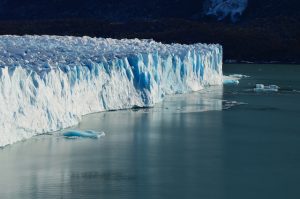A study published on Monday claimed that glaciers in the Himalayas are melting at a “exceptional” rate as a result of global warming, jeopardising the water supply of millions of people in Asia.
The researchers discovered that since the last big glacier expansion 400-700 years ago, known as the Little Ice Age, the Himalayan glaciers have lost ice ten times faster in the previous few decades than on average.
Also Read | Sonmarg-Drass connecting Zojila Tunnel expected to be ready by 2024
The research, which was published in the journal Scientific Reports, also revealed that Himalayan glaciers are disappearing at a much faster rate than glaciers in other parts of the world.
The size and ice surfaces of 14,798 Himalayan glaciers during the Little Ice Age were reconstructed by a team lead by academics from the University of Leeds in the United Kingdom.
According to their calculations, the glaciers have lost roughly 40% of their area, dropping from a peak of 28,000 square kilometres (km2) to around 19,600 km2 today.
Also Read | India, Russia oppose UN resolution linking climate change, security
They also lost between 390 and 586 cubic kilometres (km3) of ice at that time, according to the study.
According to them, the water released by the melting has raised sea levels by 0.92 to 1.38 millimetres (mm) around the planet.
“Our findings clearly show that ice is now being lost from Himalayan glaciers at a rate that is at least ten times higher than the average rate over past centuries,” study corresponding author Jonathan Carrivick, from the University of Leeds, told AFP.
“This acceleration in the rate of loss has only emerged within the last few decades, and coincides with human-induced climate change,” Carrivick said.
Also Read | Record highs, rain and beaver damage in Arctic: Study
After Antarctica and the Arctic, the Himalayan mountain range is home to the world’s third-largest volume of glacier ice, and is commonly referred to as “the Third Pole”.
According to the researchers, the rapid melting of Himalayan glaciers has serious implications for hundreds of millions of people who rely on Asia’s major river systems for food and electricity.
The Brahmaputra, Ganges, and Indus are among these rivers, according to them.
To ‘reconstruct’ the ice surface, the scientists used satellite pictures and computer elevation models to create outlines of the glaciers’ extent 400-700 years ago.
The researchers analysed the geometry of these ridges to estimate the old glacier extent and ice surface elevation using satellite pictures that revealed ridges that marked the former glacier limits.
The volume and thus mass loss between the Little Ice Age and now was calculated by comparing the glacier reconstruction to the glacier today.
The eastern Himalayan glaciers, which include east Nepal and Bhutan north of the main divide, are losing mass at a quicker rate.
This fluctuation, according to the study, is attributable to changes in geographical features on both sides of the mountain range, as well as their interaction with the environment, resulting in various weather patterns.
According to the researchers, Himalayan glaciers are also melting quicker where they finish in lakes, which have multiple warming effects, than where they stop on land.
Because the quantity and size of these lakes are growing, they predict that mass loss will continue to accelerate.
Glaciers with considerable amounts of natural debris on their surfaces lose mass more quickly, accounting for roughly 46.5% of total volume loss although accounting for only about 7.5% of all glaciers.
“While we must act urgently to reduce and mitigate the impact of human-made climate change on the glaciers and meltwater-fed rivers, the modelling of that impact on glaciers must also take account of the role of factors such as lakes and debris,” Carrivick added.






